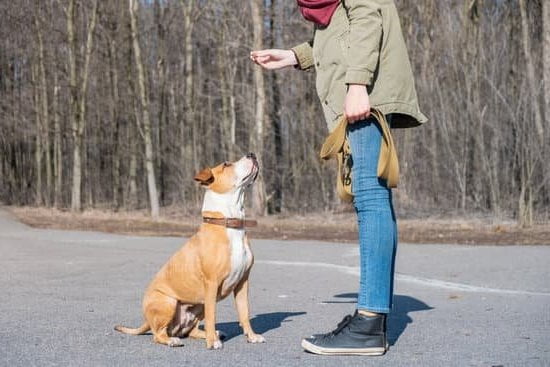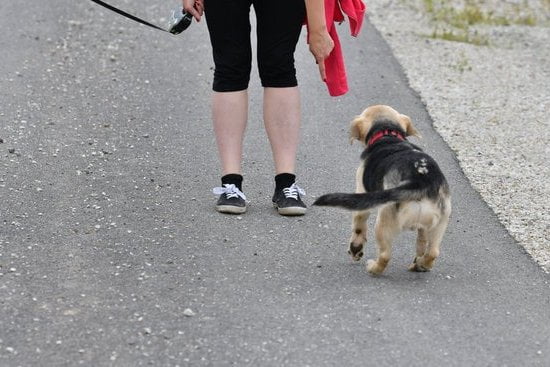Are you considering crate training your dog but unsure if it’s the right decision? If so, you’re in the right place. In this article, we’ll explore why you should crate train your dog and the many benefits it can offer. From creating a safe and comfortable space for your furry friend to addressing separation anxiety and stress, crate training has proven to be a valuable tool for both dogs and their owners.
As responsible pet owners, it’s important to provide our dogs with the necessary tools and resources to ensure their well-being and happiness. Crate training is one such tool that can significantly improve the quality of life for your canine companion. Whether you’re looking to teach proper potty training or address behavioral issues, crate training offers a solution that is both effective and humane.
In this article, we’ll delve into the specifics of crate training, including how it works, setting up a comfortable space for your dog, and establishing routine and consistency. We’ll also address common misconceptions about crate training and share real-life success stories from dog owners who have experienced its positive impact firsthand.
So if you’ve ever wondered about the benefits of crate training for your dog, read on to discover why it could be the best decision for both you and your furry friend.
Understanding Crate Training
Crate training is a method of training your dog to become comfortable and secure in an enclosed space. This training method can help with behaviors such as potty training, curbing destructive behavior, and managing separation anxiety. The crate becomes a safe place for your dog, where they can rest and feel secure while also giving you the peace of mind that they are safe when you cannot directly supervise them.
There are two main types of crates: wire cages and plastic airline-style crates. Wire cages are open on all sides, which allows for better ventilation and visibility for the dog. Plastic airline-style crates are enclosed on most sides but provide a more den-like environment that some dogs prefer.
To begin crate training, it’s important to introduce your dog to the crate gradually. Start by leaving the door open and allowing your dog to explore the crate at their own pace. Place comfortable bedding inside, along with some of their favorite toys or treats to associate positive feelings with the crate. Once they start spending short periods of time in the crate comfortably, you can begin closing the door for short intervals while you are home.
Some key points to remember when implementing crate training:
- Always make sure that the crate is associated with positive experiences such as treats, toys, or cozy bedding.
- Never use the crate as a form of punishment.
- Create a routine for when your dog enters their crate and stick with it.
Understanding how crate training works can help both you and your dog in creating a positive association with the crate, leading to improved behavior and a happier living environment for everyone involved.
Creating a Safe and Comfortable Space for Your Dog
Crate training is an effective method for providing your dog with a safe and comfortable space of their own. When setting up the crate, it’s essential to ensure that it feels like a positive and inviting environment for your furry friend. Start by choosing the right size crate for your dog. The crate should be big enough for your dog to stand up, turn around, and lie down comfortably.
Place soft bedding inside the crate to make it cozy and inviting. Avoid using materials that could be harmful if ingested, such as blankets with loose threads or stuffing. Make sure the bedding is washable since accidents can happen during the learning process of crate training.
Another crucial aspect of creating a comfortable space is the location of the crate. It should be in an area where your dog can still feel like they are part of the family, while also providing a sense of security and privacy. Avoid placing the crate in high-traffic areas or areas that are too isolated from family activities.
Providing your dog with toys and treats inside the crate can also help create a positive association with their new space. Toys can provide mental stimulation, while treats can reward good behavior when your dog voluntarily enters the crate. By implementing these tips, you can help ensure that your dog sees their crate as a safe haven rather than a place of punishment.
| Aspect | Recommendation |
|---|---|
| Crate Size | Big enough for standing, turning around, lying down |
| Bedding | Soft and washable materials |
| Location | In area with family activities but also privacy |
The Importance of Routine and Consistency in Crate Training
Establishing a Routine
One of the key aspects of successful crate training for your dog is establishing a routine. Dogs thrive on structure and predictability, so it’s important to create a consistent schedule for when your dog is placed in the crate and when they are let out. This routine can help your dog feel more secure and at ease with crate training, as they will come to understand what is expected of them.
Consistent Training Methods and Rules
Consistency in training methods is also crucial for effective crate training. This includes using the same commands and signals each time you place your dog in the crate or let them out. Consistency also applies to the rules you set for crate training, such as not letting your dog out if they whine or bark, as this can reinforce negative behavior.
Positive Reinforcement
Consistent use of positive reinforcement can greatly aid in crate training. Whether it’s using treats, toys, or verbal praise, rewarding your dog for good behavior inside the crate helps them associate the crate with positive experiences. Consistently providing praise and rewards for calm behavior in the crate will encourage your dog to view their space as a safe and comfortable environment.
By maintaining a regular routine, employing consistent training methods, and offering positive reinforcement, you can help ensure that your dog adapts well to crate training. These practices will not only make the process more effective but also contribute to a happier and more well-adjusted pet overall.
Teaching Potty Training and Behavioral Control Through Crate Training
Crate training can be a valuable tool for teaching both potty training and behavioral control to your dog. By establishing a routine and using the crate effectively, you can help your dog understand where and when they should go to the bathroom, as well as learn appropriate behavior.
Here are some tips for using crate training to teach potty training and behavioral control:
- Establish a routine: Dogs thrive on routine, so be consistent with when you let your dog out of the crate for bathroom breaks. Take them out first thing in the morning, after meals, before bedtime, and any time they show signs of needing to go.
- Use positive reinforcement: When your dog successfully goes to the bathroom outside of the crate, be sure to praise and reward them. This will reinforce the behavior and encourage them to continue going in the appropriate place.
- Monitor behavior: When using the crate for behavioral training, keep an eye on your dog’s behavior inside the crate. If they exhibit calm and quiet behavior, consider this a success. If they are displaying anxious or destructive behavior, it may be a sign that they need more time in the crate to learn self-control.
By using these tips and being consistent with crate training, you can help your dog understand proper potty habits and develop good behavioral control. Crate training not only provides a safe space for your dog but also helps them learn important life skills that will benefit both them and their owners in the long run.
Addressing Separation Anxiety and Stress With Crate Training
Crate training is not only beneficial for potty training and behavioral control, but it can also be an effective tool in addressing separation anxiety and stress in dogs. Many dogs experience distress when their owners leave the house, leading to destructive behavior, excessive barking, and other signs of anxiety. Crate training can provide a safe and secure environment for your dog while you are away, alleviating these issues.
The key to using crate training to address separation anxiety is to make the crate a positive place for your dog. Start by introducing the crate gradually, allowing your dog to explore it at their own pace and associating it with positive experiences such as treats and toys. Make sure the crate is comfortable with a soft blanket or bedding, and consider leaving an item of clothing with your scent to provide comfort while you’re away.
It’s important to note that crate training should never be used as a form of punishment for your dog. Instead, it should be seen as a helpful tool in providing security and comfort. With patience and consistency, many dogs find relief from their separation anxiety through crate training, leading to happier pets and owners alike.
| Separation Anxiety Relief | Crate Training Benefits |
|---|---|
| Alleviates destructive behavior | Provides safe environment while owner is away |
| Reduces excessive barking | Helps create positive associations with being alone |
| Promotes feelings of security | Can lead to happier pets and owners |
Addressing Misconceptions and Myths About Crate Training
Myth #1: Crate Training Is Cruel and Inhumane
One of the most common misconceptions about crate training is that it is cruel to confine a dog to a crate. However, when done properly, crate training can actually provide a sense of security for dogs. It gives them a safe space to retreat to when they feel anxious or overwhelmed. Furthermore, by using positive reinforcement and making the crate a comfortable environment, you can help your dog see it as their own special place.
Myth #2: Crate Training Is Only for Puppies
Another myth about crate training is that it’s only suitable for puppies. In reality, dogs of all ages can benefit from crate training. Whether you have just adopted an adult dog or have had your furry friend for years, introducing them to a crate can be beneficial for potty training, behavioral control, and providing them with a secure space.
Myth #3: Dogs Will Never Enjoy Being in a Crate
Some people believe that once a dog has been introduced to a crate, they will never enjoy being in it. However, with proper training and conditioning, many dogs come to see their crates as their own personal den. Instead of associating it with punishment or confinement, they learn to view it as a safe and comfortable space where they can relax and feel at ease.
Real-Life Success Stories
Crate training has been a game-changer for many dog owners, as it has significantly improved the lives of both dogs and their owners. One success story involves a dog named Max, who used to suffer from separation anxiety whenever his owner left for work.
With crate training, Max gradually learned to stay calm and relaxed in his crate, alleviating his anxiety and allowing his owner to leave the house without worry. This not only improved Max’s well-being but also reduced stress for his owner, creating a more harmonious relationship between them.
Another inspiring success story is about Lucy, a puppy who struggled with potty training. Despite consistent efforts, Lucy continued to have accidents around the house.
After implementing crate training as part of her routine, Lucy was able to associate her crate as a safe and clean space, motivating her to hold her bladder until she was let outside. This not only solved the potty training issue but also gave Lucy a sense of security and cleanliness that positively impacted her behavior overall.
Additionally, there are numerous stories of rescue dogs who found comfort and security through crate training after experiencing trauma or neglect in their pasts. The use of crates provided these dogs with a safe haven where they could relax and feel secure as they adjusted to their new homes. Crate training has truly transformed the lives of many dogs by giving them a sense of security, structure, and routine.
These real-life success stories highlight the positive impact that crate training can have on both dogs and their owners. By providing a safe and comfortable space for dogs while addressing various behavioral issues, crate training has proven to enhance the overall well-being of countless pets while fostering better relationships between dogs and their human companions.
Conclusion
In conclusion, crate training has proven to have numerous benefits for both dogs and their owners. By providing a safe and comfortable space for your dog, crate training can help with potty training, behavioral control, and addressing separation anxiety. It also offers a sense of security and routine for your furry friend, creating a positive impact on their overall well-being.
Furthermore, crate training promotes a structured environment that can be extremely beneficial for both the dog and the owner. With routine and consistency, dogs are able to understand boundaries and develop good behavior patterns. This not only makes them happier and more secure but also makes them easier to live with, reducing stress for the pet owner as well.
It’s important to note that crate training is not about confinement or punishment; rather, it is about providing a safe haven for your dog. When done correctly, crate training can truly improve the lives of both dogs and their owners by creating a harmonious and balanced living environment. Therefore, it’s worth considering this method as a valuable tool in raising a happy and well-behaved canine companion.
Frequently Asked Questions
Why Is It Important to Crate Train a Dog?
Crate training is important for several reasons. It provides a safe and secure space for the dog, especially when they are left alone or need to travel. It also helps with potty training as dogs naturally avoid soiling their living space. Additionally, crate training can prevent destructive behavior and keep the dog out of harm’s way when unsupervised.
Is It OK to Not Crate Train Your Dog?
While crate training is beneficial, it is not necessarily mandatory for all dogs. Some dogs may not need to be crated if they are well-behaved, non-destructive, and don’t suffer from separation anxiety. However, crate training can still be useful for providing a safe place for the dog to retreat to and for travel purposes.
Is Crate Training Stressful for Dogs?
Crate training can be stressful for some dogs if not done properly. It’s important to introduce the crate slowly and positively, using treats and praise to create a positive association.
Forcing the dog into the crate or using it as a punishment can lead to stress and anxiety. It’s essential to make the crate a comfortable and inviting space for the dog rather than a source of stress.

Welcome to the blog! I am a professional dog trainer and have been working with dogs for many years. In this blog, I will be discussing various topics related to dog training, including tips, tricks, and advice. I hope you find this information helpful and informative. Thanks for reading!





